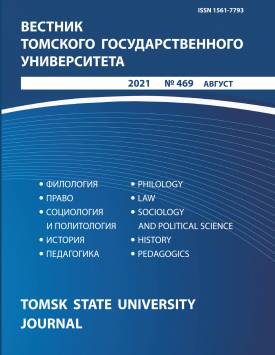Baranta as a Way to Resolve Local Conflicts in the South-Eastern Frontier of Russia in the 1740s-1750s
The article examines the rationale and use of baranta (hostage-taking) by the Russian authorities as a legal institution in relations with the nomadic peoples of the South-Eastern frontier in the 1740s-1750s. The documentary basis for the study was materials from the fund of the Orenburg Provincial Chancellery of the State Archive of Orenburg Oblast: the decree of the Collegium of Foreign Affairs on the expediency of using baranta, orders of the Orenburg governor I.I. Neplyuev, and reports from officers about its actual use. It follows from these documents that “baranta” was understood in a narrower sense, in comparison with the dictionary interpretation of this term. The question was raised about the legality of taking hostages from representatives of Kazakh families whose relatives were suspected of committing crimes against Russian subjects or the economic interests of the Russian Empire. As a way to resolve local conflicts in the zone of the South-Eastern frontier of the Russian Empire, baranta was borrowed from the nomadic peoples of the Eurasian steppe. Its use in the Orenburg border area was initiated by the ruler of the Younger Zhuz, Khan Abulkhair. Khan Abulkhair himself, his son Nurali Khan, and the brigadier A.I. Tevkelev managed to convince the government of the advisability of using this measure to resolve conflict situations. Baranta was allowed when there occurred seizures of people by Kazakhs, thefts of cattle and horses, robberies or harboring of runaway Russian subjects in Kazakh uluses. The basis was the order that had developed in relations with Kalmyks by the administration of Astrakhan Province. The Orenburg governor was to be informed on the use of baranta. Governor Neplyuev's feared that baranta would anger the Kazakh nobility, that Kazakhs would refuse to travel for exchange trade to Orenburg, would block the caravan routes, and, finally, would not assist in releasing relatives. This never occurred. The Orenburg governor not only obeyed the government's requirement to use baranta as a method of a moderate use of force, but also became its active advocate. Certainly, from the point of view of international humanitarian law, the use of mutual responsibility, imprisonment and the imposition of responsibility on innocent people for crimes committed by their relatives is inherently criminal. However, in the realities of the 18th century, this method of suppressing local conflicts limited the potential for its further growth, provided a legal basis for negotiating and satisfying the claims of the conflicting parties. REFERENCES
Keywords
baranta, governor, hostage-taking, conflict, law, frontierAuthors
| Name | Organization | |
| Dzhundzhuzov Stepan V. | Orenburg State Pedagogical University | djund@yandex.ru |
References

Baranta as a Way to Resolve Local Conflicts in the South-Eastern Frontier of Russia in the 1740s-1750s | Vestnik Tomskogo gosudarstvennogo universiteta – Tomsk State University Journal. 2021. № 469. DOI: 10.17223/15617793/469/14
